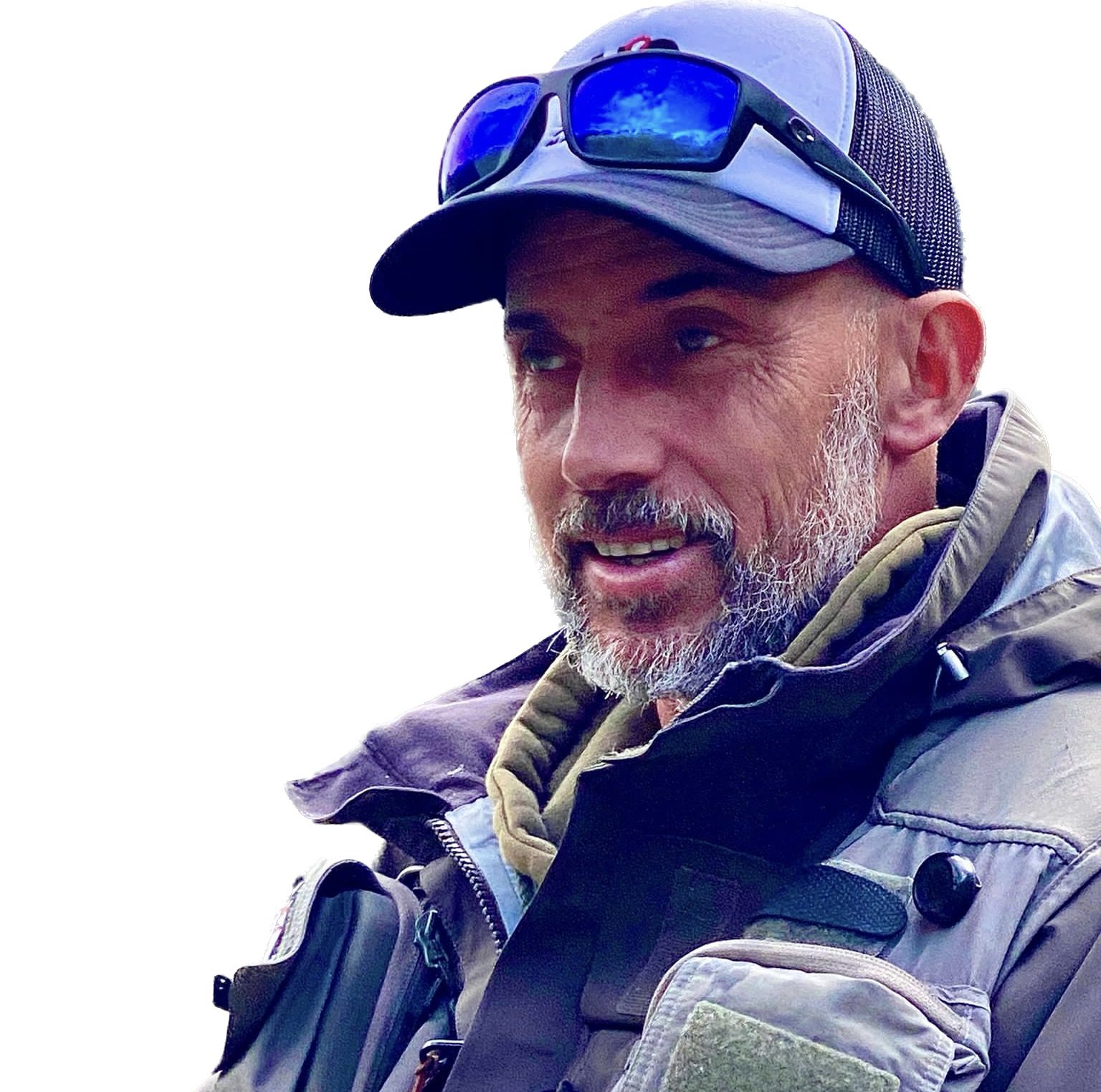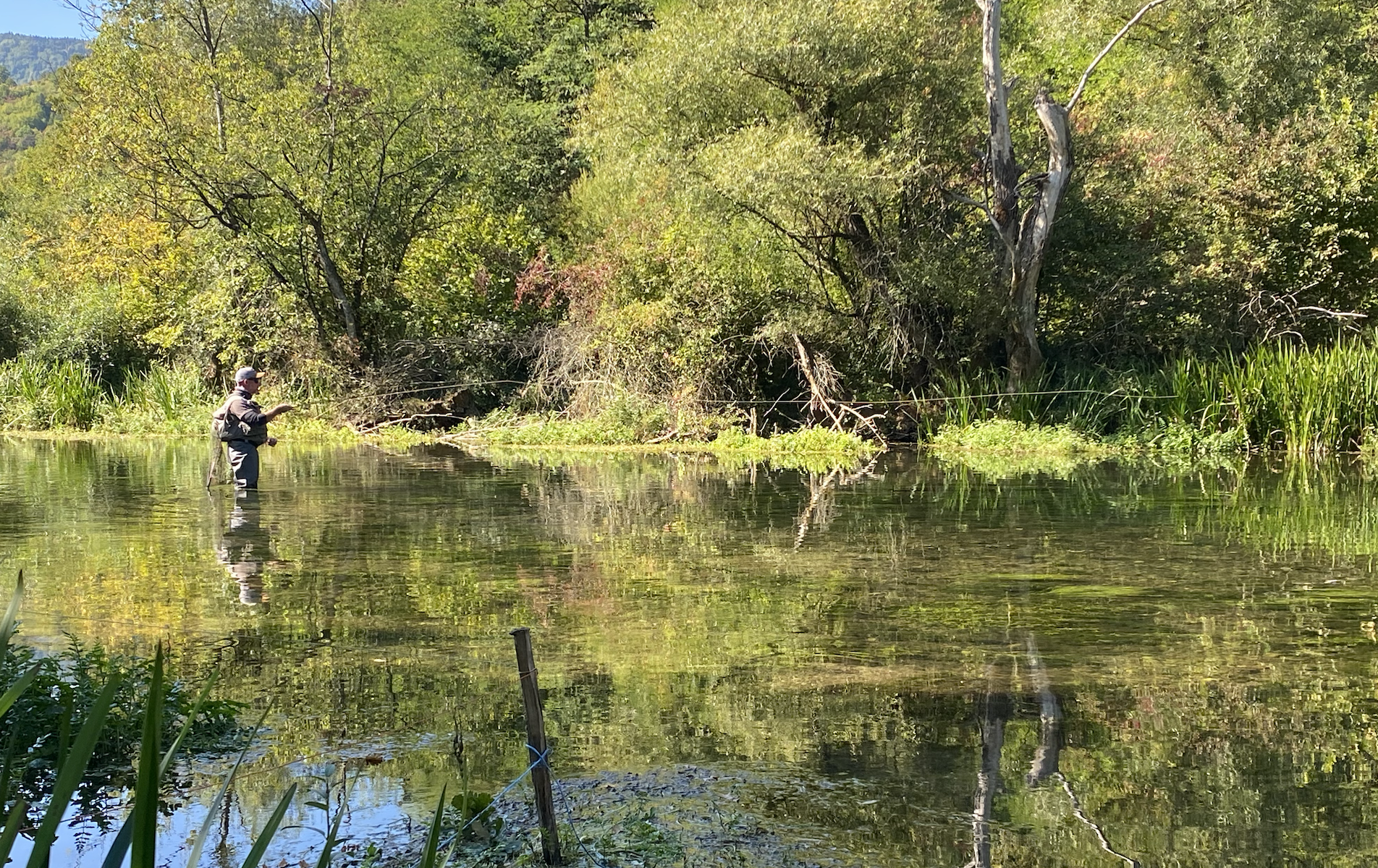
Emmanuel Crosa
1-As a lover of dry fly fishing I mainly use short rods with hard actions. It depends above all on the various fishing spots. I practice the T.L.T technique Total casting technique studied and idealised by the great master Roberto Pragliola. I mainly use the ELF77 rod. As a reel I use a Cherie B, handmade reel for lines 1 2 and 3. Occhiali polarizzati Costa. abbigliamento SIMMS, Amplitude Scentific Anglers since you can no longer find the old Orvis Lines.
2-For this type of fishing, the leaders must be absolutely the right length and well-balanced, I use leaders of 5-6 metres so that the flies don't drag. In small streams, I shorten to 4.5 metres, as I don't need long casts and because of the shape of the streams.
3-I think that the approach to rivers differs a lot, especially if you are fishing for natural fish or for stocked fish. The approach to natural fish is very different. The fish are mischievous and hide at the slightest noise. You have to practically blend in with nature, silently, and when you see the fish you have to think and work out what kind of cast to make, given the few chances of catching it.
4- And yes ... read the water! For this you have to have a lot of fishing experience. Fishing dry, you have to wait for the fish to hatch and boil, you have to know the currents, the speed of the water ... and when you understand this you look for the right fishing approach.
5- Casting...absolutely the most important thing!...basic angled, inverted and overturned casts, with these you can face almost all types of situations...You always have to understand the type of water you are fishing in order to get the best results...You fish slow, fast or flat water situations...I have been fishing for years but every outing is always something more...the best thing is to think about every situation which type of cast is the best...I am not a Master and I still have a lot to learn.
6-I believe that for a good fisherman entomology is very important!!! One must recognise insects, their evolution and above all the periods.
7-When you see a fish, it is essential to see and understand what it eats and, above all, how it eats! You can tell from any of its movements whether it eats on the surface or on the surface of the water. Observing its behaviour will give us a way to deal with the fish and, above all, to understand which fly to use to catch it!
8- I have been making flies for almost 30 years now, and absolutely must have Sedge and ephemeral flies in my box. I rarely use searching flies, and I prefer natural materials... deer, elk, but mostly CDC... materials which, if used in the right way in the construction of my flies, have a beautiful movement in the water and give the artificial a lively feel.
9-The presentation of the flies is of high importance...You have to understand the place where you are fishing and what the fish eat...There are situations, for example, that when fishing with a Sedge the fish will eat it without giving it any movement and others not...you have to practically make the fly live in the water by simulating maybe one of them laying.
10-Absolutely always upstream.
11-The great thing is that every fish has its own way of fighting, whether it is a rainbow, a brown or a grayling. I believe that for a dry fisherman, however, it is not the fight but rather the moment that the fish gets on your fly.









